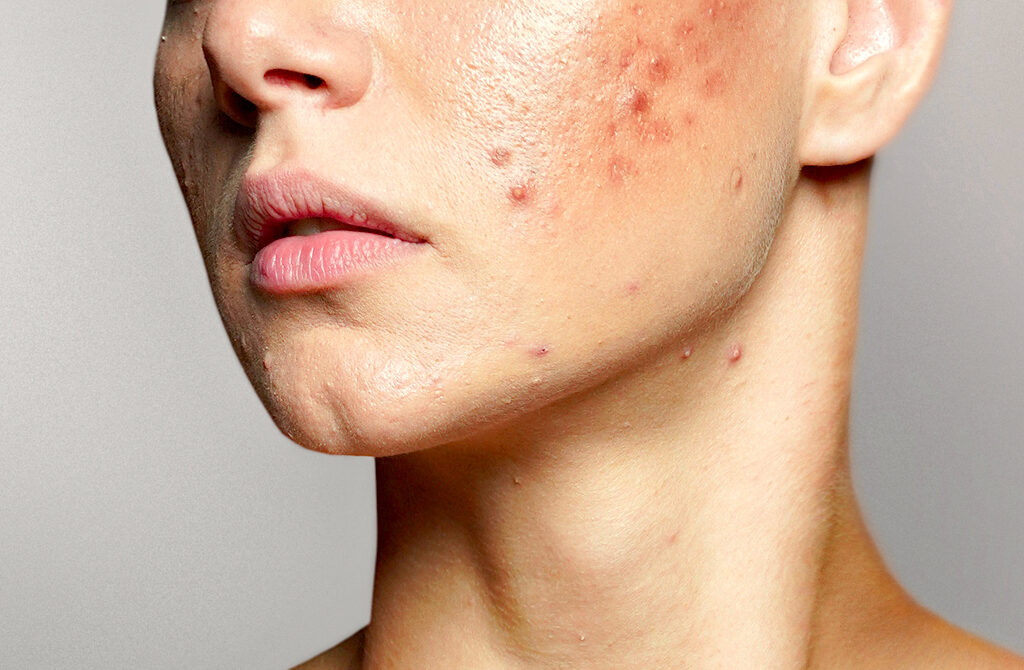Acne is a common skin condition that affects billions of people worldwide. It occurs when hair follicles become clogged with oil and dead skin cells, leading to the formation of pimples, blackheads, and whiteheads. While acne can be effectively treated with antibiotics and topical creams, some people suffer from acne scars, which can be difficult to treat. There are five different types of acne scars, each requiring its own specialized treatment. In this article, we will discuss the five types of acne scars and how innovative topical antibiotics like Vitastem Ultra can help to treat and heal acne much more effectively than most other standard products in the market.
These Are The Five Most Common Types Of Acne Scars:
1. Ice Pick Scars: These are deep, narrow, and sharp scars that can extend into the skin’s lower layers. They occur when inflamed pimples or cysts damage the skin’s collagen and elastin fibers. Ice pick scars are difficult to treat with over-the-counter products and often require professional treatments like chemical peels or laser resurfacing.
2. Boxcar Scars: These are round or oval scars that have sharp angles and resemble chicken pox scars. Boxcar scars form when the skin is destroyed by severe acne and its underlying collagen support structures are lost.
3. Rolling Scars: These are broad and shallow scars with a rolling or wave-like appearance. They are caused by the tethering of the skin to deeper tissues as a result of acne inflammation. Treatment options for rolling scars include subcision, where a needle is inserted under the skin to break the tethered bands.
4. Hypertrophic / Keloid Scars: These scars are thick, raised, and bumpy and occur when the body produces too much collagen during the healing process. They often form on the chest, shoulders, and upper back.
5. PIH (Post-Inflammatory Hyperpigmentation): This is not technically a scar but rather a darkening of the skin that occurs after acne lesions have healed. PIH is often seen in individuals with darker skin tones.
Acne scars can be a source of embarrassment and low self-esteem for many people. However, with the right acne treatment, you can significantly reduce the appearance of these scars. Innovative topical antibiotics such as Vitastem can be an effective treatment option for all the five types of acne scars mentioned above.
So, What Makes Vitastem So Much More Effective At Reducing Acne Scars?
Vitastem Ultra utilizes a highly specialized combination of ingredients and chemistry that has hacked the transdermal drug delivery formula that enables the medicine to be transported at 10x the strength and depth of other acne products available in the marketplace today.
This unique formula of theirs stimulates the walls of the skin cells in such a way that it is up to 10x more permeable than normal. This process allows for substantially more medicine to enter the cell, which then works fast to overwhelm and kill the bacteria so quickly that it does not have ample time to adapt and develop any antibiotic resistance to the medication.
This highly concentrated, rapid transdermal delivery of medicine to the site of the acne infection is what has many Vitastem users seeing noticeable results in just 24 hours, and not 5 to 7 days (as is the case with other products that treat acne), or even longer.
In addition to treating the bacteria causing the acne, Vitastem also infuses one’s skin cells that have been damaged by the infection with vitamin D3 and vitamin C (ascorbic acid) leaving the skin well-treated and rejuvenated too.
No matter which type of acne scars you may have, be sure to partner with a skilled dermatologist who can help you navigate the best course of treatment and make sure to ask your doctor if Vitastem Ultra can be a good solution to treating acne and healing your acne scars. With patience, persistence, and the innovative solutions that are now available, you can regain your skin’s smooth, even texture and regain confidence in your appearance.

